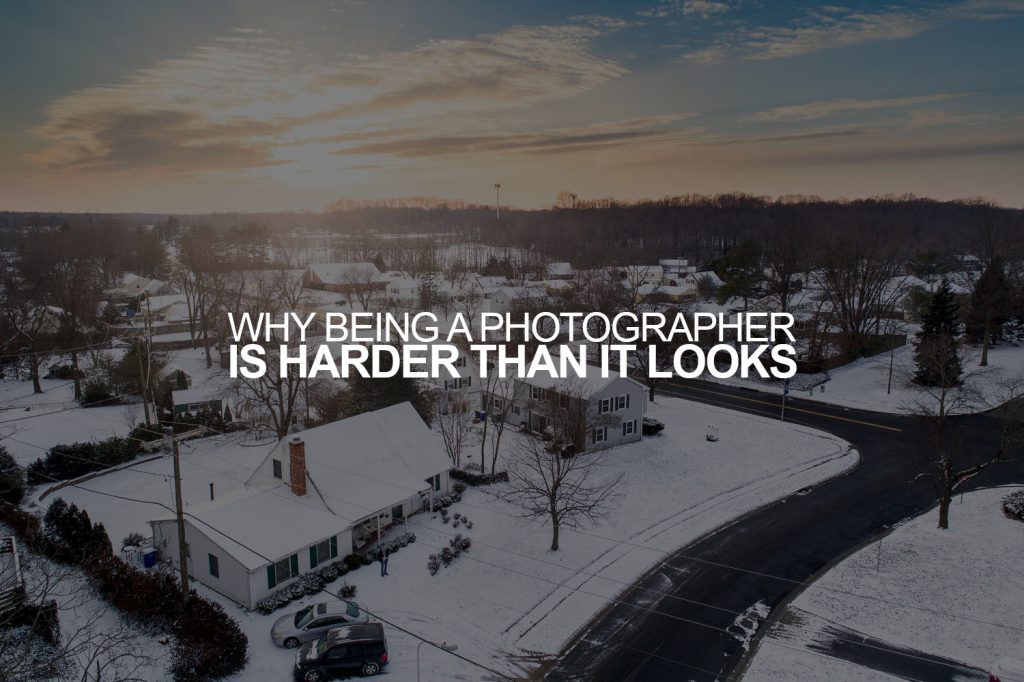When I was a kid, a photo was relatively big deal—at least in our family. Christmas, easter, halloween, family dinners, relatives in from out of town, prom night, leaving for a vacation, arriving home from a vacation; these, and others like them, were all situations were my father would go get his old brown leather camera bag from under his bed. He’d carefully affix the camera to the tripod, then attach a simple manual flash to the top of the camera, pointing it straight up, and sometimes a little to the side. I always noticed that he never pointed the light right at us, and I thought that was interesting.
My father’s camera was a simpler mechanism than the camera I use every day now, but it was also significantly more mysterious. My father liked to shoot “slides”, which meant that he didn’t just drop a roll of film off at the local lab and then pick up some prints a day or so later. No, he’d send his rolls out and 6 to 8 weeks later, he’d get a nice little box filled with tiny photographic transparencies encased in a rigid cardboard frame, and we’d look at them through a projector. We almost never had the satisfaction of seeing images my father took within a window of time where we would actually remember him taking them.
On more than a few occasions, being a kid and sitting there waiting for my dad to take a picture, the whole exercise seemed pointless. At that point in time, the act of sitting for a photo and the act of seeing and enjoying them wasn’t well linked. (Plus, for a 10 year old, 6 to 8 weeks may as well be an eternity). That’s a stark contrast with today, when the images we create live right there with us in the moment we’re creating them.
Although as I got older, what my father was doing when he created a picture was making more technical sense to me, the mindset and the workflow still seemed bonkers. I’d taken my fair share of images on film by that time, but none ever looked half as good as the photos my dad took. How did he know the picture was going to turn out right? How did he know what the right amount of light was, or where it should be coming from? The truth is, he didn’t always know, but he also didn’t always show us the photos that didn’t turn out right either.
It took my father decades to get to a point in his photography where he could shoot halfway confidently, and even after all that, he would not say he was on par with professionals of the time.
Sometime around 2002, a friend of the family turned up at our house with the most fascinating toy: a digital camera. It was this big, polaroid looking device with a (absolutely “huge”) one inch screen on the back. The device would let you take a picture, and the screen would show you that picture immediately. Sorcery.
Playing with that camera proved to be one of the most exhilarating and tantalizing isolated experiences of my young life. It’s not like I was getting good photos though—I was just getting any photo. If it was clear, and I could make out what was in it, I got excited; “Wow! if I point it at that chair and press the button… Look! You can see the chair on the screen!!” Artistry, creativity, these were not in my purview yet. I was getting a thrill out of doing what I thought my dad was doing: getting the thing I was pointing the camera at to show up in the picture. Suddenly, I was getting it and the mystery was evaporating, however philosophically misguided I might have been at the time. With the barriers my adolescent mind could think past out of the way, I was developing a real interest in this “photography” thing for myself.
Fast foreword almost a decade to the purchase of my first DSLR camera. Finally, I had a machine that worked almost just like my dad’s, except it had a sensor instead of film. I was over the moon. The first order of business would be to take the kinds of photos I’d seen my father take: pictures of people. Candid images from across the lawn, silhouettes, and the halfway posed images we call “Lifestyle Portraits” nowadays.
In that first year of shooting I discovered something important though: It was kind of easy. In fact, actually taking a picture was almost effortless. Once I learned a few tricks, like zooming in for portraits and stabilizing the camera by pressing my body up against counter tops, columns and tree trunks, I could confidently create the kinds of images my father had spent decades learning how to do. But for some reason, his still looked better.
Somewhere between the polished look of a film print and the general sensibility that ‘if this was so easy, there must be something missing’, I realized that creating an image is more than knowing the tricks to operating a camera.
The missing piece between what my father had done, and what I was trying to do, was one of discovery and the pursuit of impressing one’s self. For a film photographer, to simply create an image that turns out well is a victory. But not so with a digital camera. There is a famous quote from the famous mathematician and inventor Gottfried Leibniz, that succinctly captures what I was merely sensing at the time.
“it is beneath the dignity of excellent men to waste their time in calculation when any peasant could do the work just as accurately with the aid of a machine.”
— Gottfried Leibniz
The physical, frozen representation of a moment in time was the work of “excellent men”. Today, “any peasant” can do that part of the task. Many photographers today are twisting up their insides wondering where their place in the world is now that the pictures practically take themselves. And the answer is approximately what it’s always been: in the pursuit of impressing one’s self. Only narcissist are impressed with themselves when they do something easy. At one time, photography—the bare essentials of it—was difficult. Given 20-40 hours of solid practice, it’s not anymore. The question now is, what is still difficult? What in the world of photography is still the dignity of “excellent” people?
The question is now less about how one takes a good photo, and much more about how does one make a photo good? What does one have to do with their body and their mind, to make a photo interesting, or unique? Where the answer to that question was once isolated almost entirely into what settings you chose, where you chose to stand, and when you chose to stand there, that list has exploded in a trillion different directions today. And all of those directions are hard, and either vastly more technical, or completely non-technical.
How do you make subjects look confident when they’re not? How do you make a subject feel good about a photo? How do you get oxygen while taking a photo underwater? How do you make it look like they’re at the foot of a mountain that isn’t there? How do you carry gear to the bottom of a cave? How do you get the shapes right when painting with light? How do you meet your own wild expectations? Standing in the right place, at the right time, with the right settings and pressing the button is not usually enough anymore.
Do you see the trend here? It has to be hard. If it’s not hard, it’s also not likely to impress you, and It’s not likely to impress anyone else either.
Photography is not as easy as it looks because if it were, we’d call it something different. We call it a “snapshot”, a “pic”, a “selfie”. Yes, if we get linguistically technical, any time you capture an image with a camera you are doing “photography”, but when everyone is doing that dozens, or hundreds of times every day, is that even a useful definition anymore? I submit to you that it is not.
Photography is harder than it looks because it has to be hard. Because photographers are pursuing what is hard to do with a camera, and that may be what makes them photographers in the first place.

